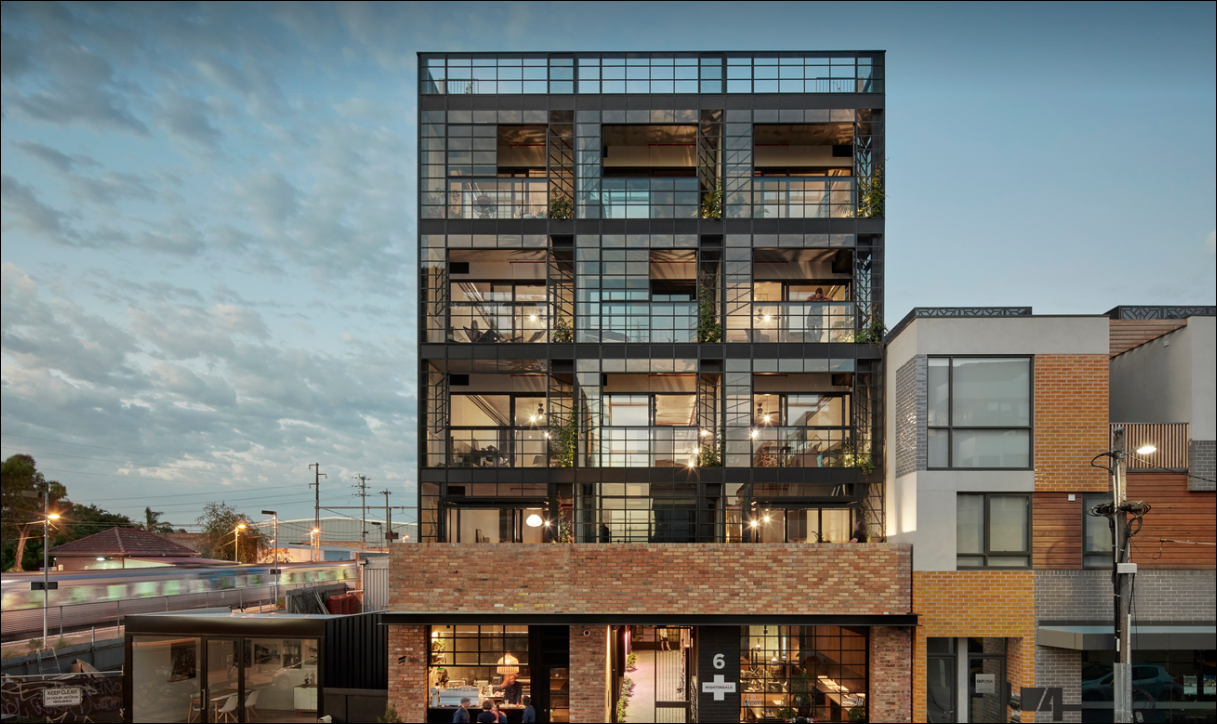
For most of the history of Melbourne, apartments were a rare housing type in the distinct flat sprawl of the metropolitan area. A combination of a housing affordability crisis and good developer return for apartments in the mid-2010s saw an apartment boom in Melbourne, which included developments increasing in numbers in middle and outer ring suburbs such as Doncaster and Ringwood. Around the same time, the concept of micro-apartments as an international trend to combat real estate affordability raised questions about whether such developments would gain a foothold in Australia’s larger cities.
The Better Apartment Design Standards (BADS) were introduced by the Victorian State Government in 2017 to address community concerns regarding design limitations in apartment developments.
Whilst the standards were effective in improving the internal amenity of apartment buildings, the outside of such buildings, including appearance and landscaping, largely remained unaddressed.
Recent media coverage about apartment facades and fire safe materials has put pressure on the State Government to further address the design of apartment developments. There has also been recent discussion within the media and studies undertaken regarding the community (or lack of) aspect to apartment living.

Kubix Apartments in City of Knox, which according to Domain.com.au has caused much public criticism about its appearance since its construction in 2015-16. Source: Google Maps
A new round of feedback has just been collected on a proposed update to BADS named Better Apartment Design in Neighbourhoods, which seeks to include apartment design standards that focus on external amenity, such as:
- Façade design and maintenance to be addressed directly within the planning permit application.
- Requirements to avoid blank façade walls/include active frontages and to minimise carparking access and presence of site services to primary street frontages.
- Construction impact requirements to protect the surrounding area from noise, dust and water pollution during the construction process.
- Inclusion of communal open space capable of being planted with at least one canopy tree within all apartment developments, with the area dependent on the size of the site.
- Benchmarks for acceptable wind conditions generated by a proposal.

Nightingale 1 Apartments in Brunswick, one of the references to good apartment design included in an image in the state government’s Better Apartments in Neighbourhoods Discussion Paper 2019
The proposed BADS update will see requirements for landscaping and built form standards adopted across the state.
We believe it is industry accepted that the first round of BADS increased internal amenity within apartment developments although there have been criticisms, one of the biggest being larger apartments meeting the minimum standards of BADS equals a higher selling point and decreased affordability.
Recent responses to the proposed BADS update from the design industry have questioned how the new standards maintain affordability if apartment developments are required to incorporate significant setbacks to upper floors thus increasing construction costs. Another point raised is that small apartments can still be quality living spaces.
Responses from the development industry indicate that it is already difficult to deliver affordable apartment housing in middle ring suburbs due to the extensive areas of land zoned for low density development, garden area requirements and the cost of a long planning process. The introduction of the new standards has been seen by some within the industry as potential further inhibitors to making a viable return on investment.
The consultation report is set to be released in the next few months and we look forward to discovering whether these proposed requirements are balanced, meaningful and economically achievable and have responded to industry concerns.
Latest Projects
|
O'Loughlan Street, ORMOND Heritage |
|
Bank Street, SOUTH MELBOURNE Single Dwelling |
Latest Blog
|
Regional Sprawl: Ballarat Case Study |
|
Melbourne Population Decline |
